New Jersey Butterfly Club
A chapter of the North American Butterfly Association (NABA)
Striped Hairstreak
Satyrium liparops
Identification: Very small—size of thumbnail. Almost never seen with wings open. Below: FW and HW grayish-brown with numerous Long, narrow, parallel white lines that make it look more "striped" than Banded and Hickory hairstreaks. A good field mark is the large orange cap on the blue spot at the HW tails. Similar hairstreaks: Banded and Hickory both lack the orange cap on the blue spot.
NJ Status and Distribution: Resident. Becoming relatively rare in North Jersey but much more common and widespread in the southern counties.
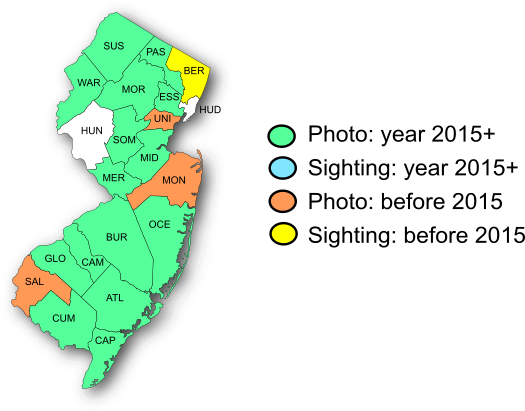
Habitat: Wood edges and openings close to host plants. May be attracted to gardens that are near woods with host plants. Likes to nectar at milkweeds and Indianhemp.
Flight Period: Early June—late July (occasionally into August). Extreme dates: North Jersey 6/7—8/24; South Jersey 6/2—8/3.
Caterpillar Food Plants: Apparently a wide variety of woody plants but primarily the genera Prunus (cherries) and Vaccinium (blueberries). Most Striped Hairstreaks in northern NJ have been found in the vicinity of Black Cherry, a common and widespread native tree.
Overwintering Stage: Egg.
Good Locations: Lakehurst RR tracks. Reported from many other locations in South Jersey.
Comments: Seeing a Striped Hairstreak (any hairstreak, really) invariably brings a smile to the face of any butterflier.
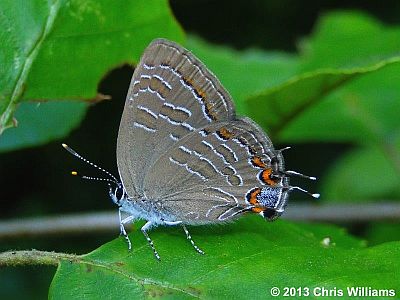
Helmetta, Middlesex Co., NJ, 6/1/12.
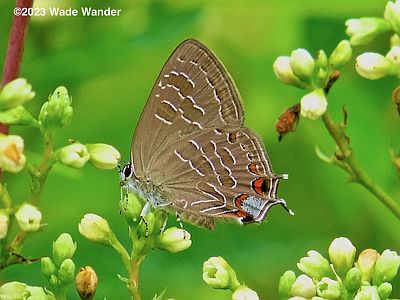
Fredon Twp., Sussex Co., NJ, 6/21/15, on Indianhemp.
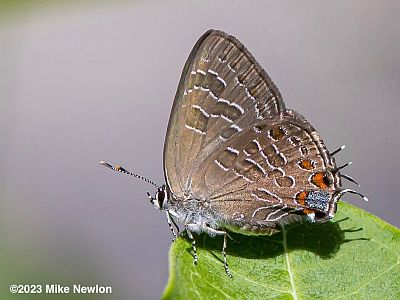
Stillwater Twp., Sussex Co., NJ, 7/7/18.
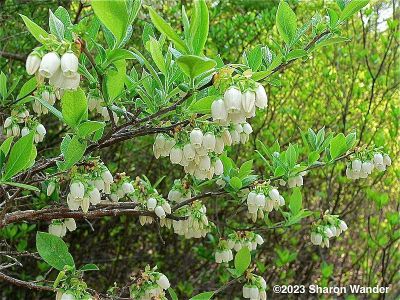
Highbush Blueberry (Vaccinium corymbosum), a caterpillar food plant for Striped Hairstreak.
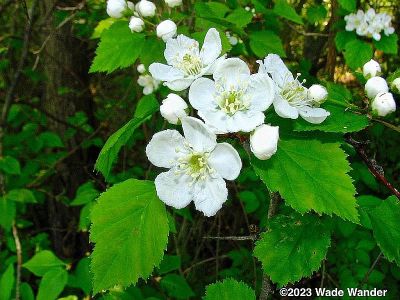
Hawthorn (Crataegus sp.), one of the genera in the Rose Family that is used as caterpillar food by Striped Hairstreak.